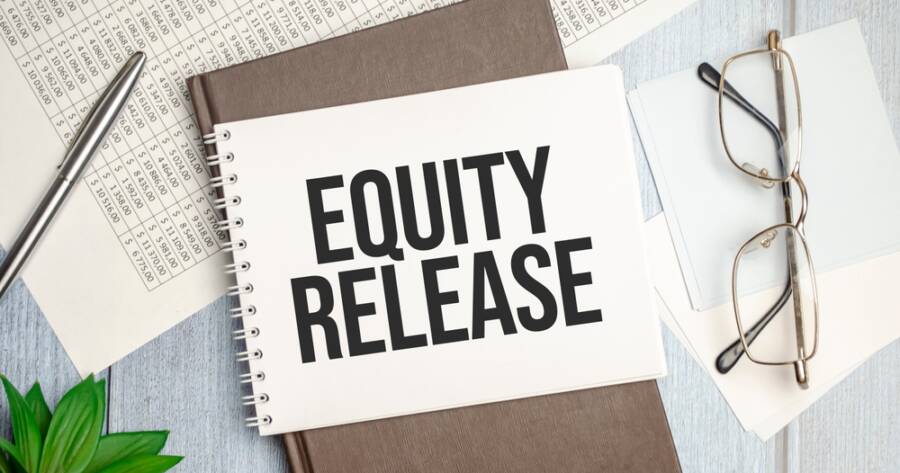Equity release has become a popular financial option for homeowners in the UK, particularly for those who are aged 55 and over. It allows individuals to unlock the value tied up in their property to support their retirement plans or cover unexpected costs. However, before jumping into an equity release plan, it’s important to understand how much equity you can actually release, and how to go about calculating that amount. Discover equity release in the UK, how the amount is determined, and what steps to take to find out how much you could access.
What is Equity Release?
Equity release is a financial product that allows homeowners to access the equity in their property without having to sell it. There are two main types of equity release plans available in the UK:
- Lifetime Mortgages: This is the most common form of equity release. With a lifetime mortgage, you take out a loan secured against your home. The loan is repaid when you pass away or move into long-term care, and you can continue living in your property for as long as you choose. Interest is added to the loan, and the debt is repaid when the home is sold.
- Home Reversion Plans: With a home reversion plan, you sell a percentage of your home to a reversion company in exchange for a lump sum or a regular income. You maintain the right to live in the property for as long as you wish, but when you pass away or move into care, the reversion company takes ownership of its share of the property.
Both of these options allow you to access a portion of your home’s value, but each has its own pros and cons. A key aspect of both products is understanding how much equity you can release, as this will depend on several factors.
How is the Amount of Equity Release Determined?
The amount you can release from your home depends on a variety of factors. The most important ones include:
- Your Age: Generally, the older you are, the more equity you can release. Lenders tend to offer higher percentages of the property’s value to older individuals because the loan is expected to be repaid sooner.
- The Value of Your Property: The more valuable your home, the more equity you can potentially release. The loan is typically calculated as a percentage of the property’s current market value.
- Health Considerations: Some equity release providers will offer higher amounts if the homeowner is in poor health. This is because lenders may estimate that you will require fewer years to repay the loan, as the amount owed is typically paid off when the homeowner passes away or moves into care.
- The Type of Plan: The type of equity release product you choose will also affect the amount you can release. Lifetime mortgages typically allow you to borrow more, but interest is accrued over time, so it can end up being more expensive in the long run. Home reversion plans, on the other hand, may release a lower amount upfront, but there is no interest to worry about, and the debt is settled when the property is sold.
- Property Type and Location: The type of property you own can also impact how much equity you can release. Lenders typically have guidelines about the types of properties they are willing to consider, with some preferring standard homes over flats or properties in rural areas. The location of your home can affect its value, and thus, the amount of equity you can release.
How to Find Out How Much Equity You Can Release
To determine how much equity you could release, there are several steps you can take:
- Use an Online Equity Release Calculator: Many equity release providers offer online calculators, such as Aviva, that give you an estimate of how much you could release based on your age and the value of your home. These calculators are easy to use and can give you a rough idea of what to expect.
- Consult with a Specialist: It’s important to speak with an equity release specialist or financial advisor who is qualified to provide you with advice based on your specific circumstances. They will conduct a thorough assessment, considering your age, health, the value of your property, and any other factors that may affect the amount of equity you can release. This professional advice can help you make an informed decision and ensure that you choose the best option for your financial future.
- Get a Property Valuation: You will need an official valuation of your property to get an accurate idea of how much equity you can release. This valuation can be arranged through your equity release provider or an independent appraiser.
- Compare Different Providers: Different equity release providers offer different terms and conditions. It’s essential to compare multiple options to ensure you get the best deal for your needs. Consider the interest rates, fees, and flexibility offered by each provider.
Unlocking the Potential of Your Home with Equity Release
Equity release can provide a valuable source of income or funding for older homeowners in the UK, but understanding how much you can release is essential to making an informed decision. By considering factors like your age, the value of your home, and the type of plan you choose, you can determine the amount of equity that may be available to you. Utilizing online calculators, seeking advice from specialists, and comparing providers will help you navigate the process and find the best solution for your financial needs in retirement. Always ensure that you fully understand the terms and long-term implications of equity release before committing.
